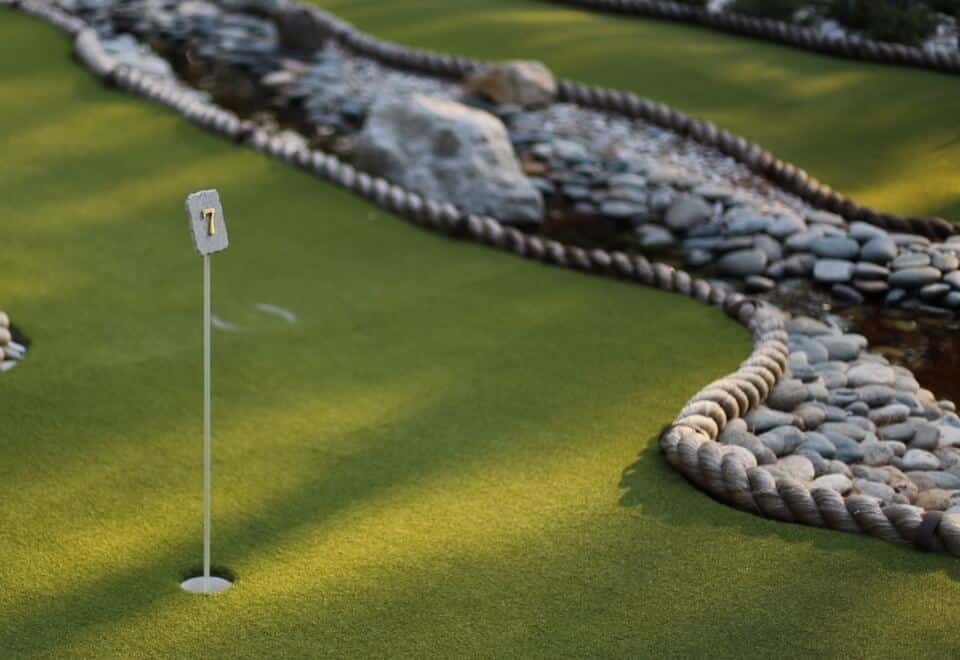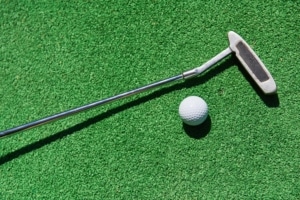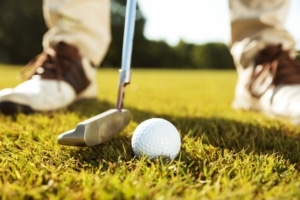Putting Green Design Ideas: How To Build An Artificial Putting Green In Your Backyard


It takes a considerable effort to maintain natural putting greens on golf courses. These surfaces are almost impossible to have at home. But if you are a golf fan, adding an artificial putting green to your backyard is the perfect alternative. Here is what you need to know about these surfaces!
An artificial putting green is a fake grass with a low pile height that supports golf ball movement. These surfaces are lower than the fake turf you use for the lawn to ensure the ball rolls smoothly. Manufacturers use synthetic fiber, and the idea is to resemble the grass used on actual golf courses.
You need an outdoor putting green turf that can handle environmental factors. It shouldn’t fade under the influence of UV rays, and it should be capable of resisting rain and other weather conditions. Here are the main features to consider when choosing the putting green surface!

It described how much your outdoor putting green surface weighs per square yard. You’ll find the standard turfs to be from 21 to 40 oz. But if you want a top-quality putting green, go with 41 to 60 oz. The additional material will make your turf denser, which improves its longevity.
Another thing to consider is the pile height, which describes the turf’s thickness. Outdoor fake grass for gold should be from 0.5 to 0.75 inches thick. It ensures golf balls move smoothly.
This rating shows how fast a golf ball rolls on the surface. If the artificial turf putting green has a high stimp rating, the ball will move fast. You measure this reading by using a Stimpmeter. It’s a metal ramp you use to check how far the ball will go on the chosen surface.
Here are the three main categories of Stimp ratings recommended by UGSA and US Open
You can adjust the velocity by manipulating the infill quantity. If you add infill, it will boost the speed of your putting green surface.
 Turf Material
Turf MaterialSynthetic fibers are the primary material for artificial turfs, and manufacturers choose the following for putting green surfaces:
It’s a putting green surface, so the color would obviously be green. However, you can pick from multiple shades. You want fake turf that looks realistic but also one that fits your outdoor area. So, when thinking about a small backyard putting green ideas, match it with the rest of the setup in your garden.

If you get a green kit, make sure to follow the instructions provided. But if you want to install the artificial grass yourself, here’s a quick guide:
If you go with a DIY kit, you’ll pay anywhere from $6 to $18 per square foot. The price depends on the quality and the brand. As for the standard packages, the cost per square foot decreases with large sizes.
For example, if you pick a small putting green, it might cost you $30+ per sq. ft. But if you need more than 2,000 sq. ft, that price can drop to $15 per square foot. Contact our team to learn more!

Festival Turf
Phone: 844-702-8873
Email: [email protected]
Las Vegas HQ Hours
Monday-Friday: 8:00am – 4:00pm PST
Saturday: 8:00am – 12:00pm
Sunday: CLOSED
Have a Question?
Contact us now and we’ll help you find what you need!

 Landscaping 101: Easy Landscaping Ideas for Beginners
Landscaping 101: Easy Landscaping Ideas for Beginners